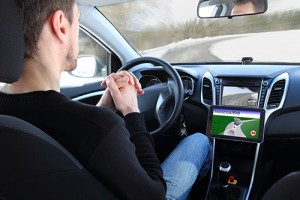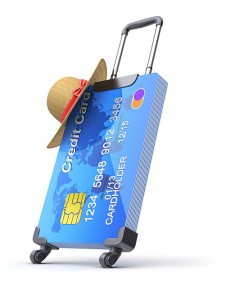 The Future of Self-Driving Cars
The Future of Self-Driving Cars
I own a sports car that requires all of my attention while driving. I love driving it but from time to time I think about what it will be like to drive (or ride in) a self-driving car. According to a recent article, at least two automakers are only five years away from production of self-driving cars. I think I would be bored, but I can see the advantages of being able to get caught up on work or sleep or enjoying a good book during commutes. It would be like having your own chauffeur. I was curious as to what the future holds, so I did some research.
Computers vs. Humans
In the article mentioned above, self-driving cars have been in 11 accidents in the last six years and Google claims its cars were not at fault in any of them. Perhaps the future of self-driving automobiles lies in providing transportation for people who do not drive well or choose not to drive. When it comes to driving, do you trust a computer or a 17-year-old?
The Future Is Now
The early components of self-driving cars are already available. Adaptive or autonomous cruise control is an option on several foreign and domestic vehicles. This technology typically uses radar to sense the distance between you and the car ahead of you. It will then actively brake or accelerate to maintain a safe distance between the two vehicles. Unfortunately, it is less effective in rain, fog, or snow.
Acura’s Lane Keeping Assist System uses a camera mounted between the rearview mirror and the windshield to track whether you are staying in your lane. If you veer outside the lines, then the car will warn you and also apply light torque to the steering to guide you back into the lane. In theory you can drive without hands on the wheel, but a dashboard warning will appear if you do it for very long. If you signal for a legitimate turn or lane change, then the system will assume that you are in control and not try to nudge you back to center.
Crash avoidance systems are also available now. Other technology exists, but needs to be integrated and perfected before going into mass production.
Thoughts
Google’s self-driving cars are set to hit the streets this summer in neighborhoods around the Mountain View, CA campus. Self-driving cars are on the near horizon, but there are social and legal issues to deal with. For example, should laws be different for self-driving vehicles? In the event of a traffic infraction who is responsible, the car or the driver/rider? How can a self-driven car help certain segments of the population? I will explore these questions in future blog posts.
Kelly Brown is an IT professional and assistant professor of practice for the UO Applied Information Management Master’s Degree Program. He writes about IT and business topics that keep him up at night.




